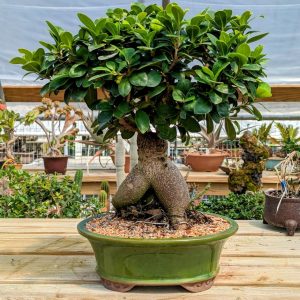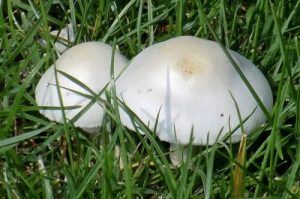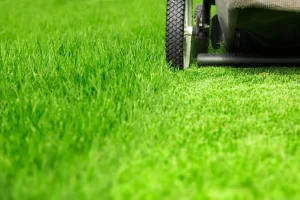Imagine savoring the rich, velvety taste of chocolate made from cocoa beans you’ve grown yourself. Sounds like a dream, right?
Well, if you’re wondering if you can grow cocoa in a greenhouse, you’re in the right place. Growing cocoa might seem like a challenge, especially if you’re not living in the tropics. But with a greenhouse, you can recreate the perfect environment for these amazing plants.
This guide is crafted to help you discover how a greenhouse can turn your backyard into a mini cocoa farm. Feel the excitement as you learn how to nurture cocoa plants right at home, ensuring that your chocolate delights come straight from your garden. Dive in and find out how you can transform your greenhouse into a haven for cocoa cultivation.
Cocoa Plant Basics
Understanding the basics of cocoa plants can be your first step towards successfully growing them in a greenhouse. Cocoa, the source of chocolate, is a fascinating plant with unique characteristics and specific growth requirements. Let’s dive into its origins and what it takes to cultivate this tropical delight.
Origin And Characteristics
Cocoa plants, scientifically known as Theobroma cacao, originate from the tropical regions of Central and South America. They thrive in warm, humid climates, which is why they’re typically found near the equator.
The cocoa tree can reach up to 20-30 feet tall, boasting large, glossy leaves and small, fragrant flowers. These flowers transform into cocoa pods, containing the precious beans used for chocolate production. Each pod can house 20 to 50 beans, offering a glimpse into the plant’s bounty.
Have you ever considered the journey a cocoa bean takes from pod to chocolate bar? It’s a process steeped in history and tradition, reflecting the plant’s rich heritage.
Growth Requirements
Cocoa plants have particular needs that must be met for successful growth. They require temperatures between 65°F and 90°F, making them ideal candidates for greenhouse cultivation where conditions can be controlled.
Humidity levels should be kept high, mimicking their native tropical environment. Regular watering is crucial, but avoid waterlogging, as it can damage the roots.
Soil matters too! Ensure your cocoa plant has well-draining soil enriched with organic material. Fertilizing with nitrogen and potassium can boost growth and health.
Have you thought about how a greenhouse can transform your cocoa-growing experience? By managing these conditions, you can replicate the plant’s natural habitat and enjoy a successful harvest.
Greenhouse Growing Conditions
Cocoa can thrive in a greenhouse with the right conditions. Maintain warm temperatures and high humidity for success. Proper care ensures healthy growth and fruitful harvests.
Growing cocoa in a greenhouse can be a rewarding endeavor, provided you create the right conditions. Greenhouse environments offer the chance to control every aspect of cocoa’s growth, from temperature to light. Let’s dive into the essential elements you’ll need to master.Temperature Control
Cocoa plants thrive in warm conditions. Aim to maintain a temperature between 70°F and 90°F. Consistent warmth mimics their natural tropical habitat. Sudden drops can stress the plants. Use heaters or thermal mats during colder months. Consider installing a thermostat for precision.Humidity Management
Cocoa loves humidity, typically around 70% to 90%. Too dry, and the plants may suffer. Too wet, and you risk mold. Use a hygrometer to keep track. Misting systems or humidifiers can help maintain the right level. Remember to ventilate to prevent excessive moisture buildup.Light And Shade Needs
Cocoa plants require bright, indirect sunlight. Direct sun can scorch the leaves. Shade cloths can help diffuse harsh rays. Supplement with grow lights if natural light is insufficient. Aim for around 12 hours of light daily. Balance is key to healthy growth. Have you ever thought about how small changes in your greenhouse can impact your cocoa yield? Each tweak you make brings you closer to a successful harvest. Embrace the challenge and watch your cocoa plants flourish under your care.Soil And Nutrients
Growing cocoa in a greenhouse requires rich soil and essential nutrients. Proper soil composition ensures healthy cocoa plant growth. Regular nutrient supplementation is vital for optimal yield.
Growing cocoa in a greenhouse requires attention to soil and nutrients. Cocoa plants thrive in specific soil types and need proper nutrients to grow. This section will guide you through ideal soil composition and effective fertilization strategies.Ideal Soil Composition
Cocoa plants prefer well-drained, fertile soil. A mix of sandy loam and clay works well. Ensure the soil pH is between 6.0 and 7.0. This range supports nutrient uptake. Organic matter improves soil texture and fertility. Add compost or well-rotted manure to enrich the soil. Use mulch to retain moisture and regulate temperature. Mulch also suppresses weeds and adds nutrients as it decomposes. Ensure the soil has good aeration. This prevents root rot and promotes healthy growth.Fertilization Strategies
Cocoa plants need balanced nutrients. Use a fertilizer with nitrogen, phosphorus, and potassium. These are crucial for plant growth and pod development. Apply fertilizers every few months during the growing season. Organic fertilizers like compost tea are beneficial. They provide nutrients and improve soil health. Avoid over-fertilizing, which can harm plants and the environment. Test soil regularly to adjust nutrient levels accordingly. This ensures plants receive the right amount of nutrients. Consider slow-release fertilizers for steady nutrient supply. These fertilizers minimize nutrient loss and reduce the need for frequent applications.
Credit: cocoacircle.com
Watering Techniques
Growing cocoa in a greenhouse requires precise watering techniques. Consistent moisture levels are key for healthy cocoa plants. Drip irrigation systems or misting can efficiently maintain the needed humidity and soil moisture, ensuring optimal growth conditions.
Growing cocoa in a greenhouse presents unique challenges, especially when it comes to watering techniques. The controlled environment of a greenhouse allows you to maintain consistent moisture levels crucial for cocoa’s growth. However, it’s essential to adopt the right methods to ensure the health and productivity of your cocoa plants.Irrigation Systems
Choosing the right irrigation system can make or break your cocoa cultivation efforts. Drip irrigation is an effective choice, delivering water directly to the root zone with minimal wastage. This method helps maintain the soil’s optimum moisture level without over-saturating it. Alternatively, you might consider a misting system. This system not only waters the plants but also helps in maintaining humidity, which is vital for cocoa. Evaluate your greenhouse setup to decide which system best suits your needs.Water Quality Considerations
The quality of water you use is just as important as the quantity. Ensure that the water is free from harmful chemicals and salts that could damage your plants. Using filtered or rainwater can be beneficial, as they often have fewer impurities. Test your water regularly to monitor its pH level. Cocoa plants thrive in slightly acidic conditions, so adjust the water accordingly. Remember, the right water quality ensures not only healthy plants but also a bountiful cocoa harvest. Have you ever wondered how the water you use affects your cocoa plants’ health? Choosing wisely today might lead to a more fruitful tomorrow.Pest And Disease Control
Growing cocoa in a greenhouse can offer many benefits. But, it also brings challenges such as pest and disease control. Maintaining a healthy environment is crucial for cocoa plants. Pests and diseases can quickly damage your greenhouse. Understanding how to manage these threats is key to successful cocoa growth.
Common Pests In Greenhouses
Several pests target cocoa plants in greenhouses. Aphids are small insects that suck plant sap. They weaken plants and spread diseases. Spider mites are another concern. They thrive in warm, dry conditions and cause leaf damage. Whiteflies also pose a threat. These tiny insects feed on plant juices, leading to wilting and yellowing leaves.
Preventive Measures
Prevention is essential for controlling pests and diseases. Start by keeping your greenhouse clean and tidy. Remove fallen leaves and debris regularly. This reduces hiding spots for pests. Inspect plants often for signs of infestation. Catching problems early makes control easier. Use insect-proof screens on vents and windows. This helps keep pests out while allowing airflow. Introduce beneficial insects like ladybugs. They naturally control pest populations.
Maintain proper humidity and temperature levels. This discourages pest breeding and disease spread. Rotate crops and avoid overcrowding plants. This reduces stress and pest attraction. Ensure good ventilation to prevent fungal diseases. Water plants at the base, not on leaves, to reduce fungal growth. Consider using organic pesticides as a last resort. They are less harmful to the environment and beneficial insects.
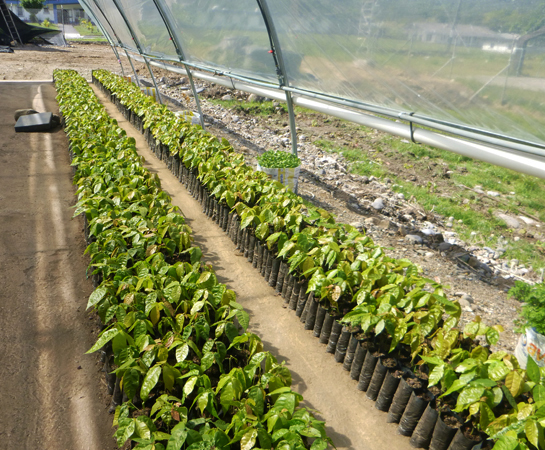
Credit: reachbeyond.org
Harvesting Cocoa
Growing cocoa in a greenhouse can be a rewarding endeavor, especially when it comes to the harvesting phase. Cocoa harvesting is not just about picking the pods; it’s about timing and technique. You need to know when the pods are mature and how to harvest them efficiently. Let’s dive into the essentials of harvesting cocoa in your greenhouse.
Signs Of Maturity
Cocoa pods signal their readiness for harvest through color changes. Keep an eye on the pods, as they shift from green to a vibrant yellow or orange, depending on the variety. This visual cue is your first hint that the pods might be mature.
Another sign is the pod’s texture. Mature cocoa pods will feel firm, yet slightly give under pressure. If the pod feels too hard, it might not be ready. Consider using the thumbnail test: gently press your thumbnail into the pod’s surface; if it leaves a mark, the pod is likely mature.
Regularly check your pods, as maturation can vary even within the same greenhouse environment. Have you noticed a difference in maturity rates between pods in different locations in your greenhouse?
Harvesting Methods
Once your cocoa pods are mature, the next step is selecting the right harvesting method. The traditional method involves using a machete or sharp knife to cut the pods from the tree. This requires precision to avoid damaging the tree’s bark.
An alternative is the twist-and-pull method. This technique is less invasive and involves twisting the pod until it breaks free from the tree. This can be ideal for smaller greenhouses where space is limited.
Consider using hand shears for a more controlled approach. They offer precision and are less likely to harm the tree compared to larger tools. Have you tried different harvesting tools? What worked best for your greenhouse setup?
Challenges And Solutions
Growing cocoa in a greenhouse faces challenges such as temperature control and humidity levels. Solutions include installing efficient climate control systems and ensuring proper irrigation to mimic tropical conditions.
Growing cocoa in a greenhouse presents unique challenges and solutions. Cocoa plants thrive in tropical climates, requiring careful management in controlled environments. Greenhouses offer a promising opportunity to cultivate cocoa outside its natural habitat. Success depends on understanding and addressing common problems while implementing innovative solutions.Common Problems
Cocoa plants need consistent temperatures. They prefer warmth year-round. Fluctuating temperatures can stress the plants. Humidity levels must remain high for optimal growth. Low humidity leads to wilting and poor health. Light is crucial for cocoa plants. They need filtered sunlight. Too much direct light can damage leaves. Nutrient management is essential. Cocoa requires specific minerals. Lack of nutrients affects yields and plant health.Innovative Solutions
Temperature control can be achieved with automated systems. These systems maintain consistent warmth. Humidity can be managed with misting systems. Regular misting keeps humidity levels stable. Install shade cloth to filter sunlight. This prevents leaf damage. Use soil amendments for nutrients. Tailor them to cocoa’s specific needs. Hydroponic setups offer precise nutrient delivery. They ensure plants receive essential minerals.Success Stories
Growing cocoa in a greenhouse is possible and rewarding. With the right conditions, many have successfully cultivated cocoa. This method provides control over temperature and humidity, essential for cocoa plants.
Success stories of growing cocoa in a greenhouse inspire many. These stories show the potential and possibilities. Many have tried and succeeded, offering valuable insights.Case Studies
Several growers have shared their experiences. A farmer in the Netherlands created a tropical environment in his greenhouse. He adjusted temperature and humidity levels. His cocoa plants thrived, producing quality beans. Another case from Canada highlights a different approach. The grower used hydroponics in a controlled setup. This method led to healthy cocoa plants and a good yield.Lessons Learned
These success stories offer important lessons. Consistent monitoring is crucial. Temperature, light, and humidity need regular checks. Adaptability is key. Each greenhouse may require different adjustments. Patience plays a significant role. Cocoa trees take time to mature. Perseverance and dedication are necessary for success.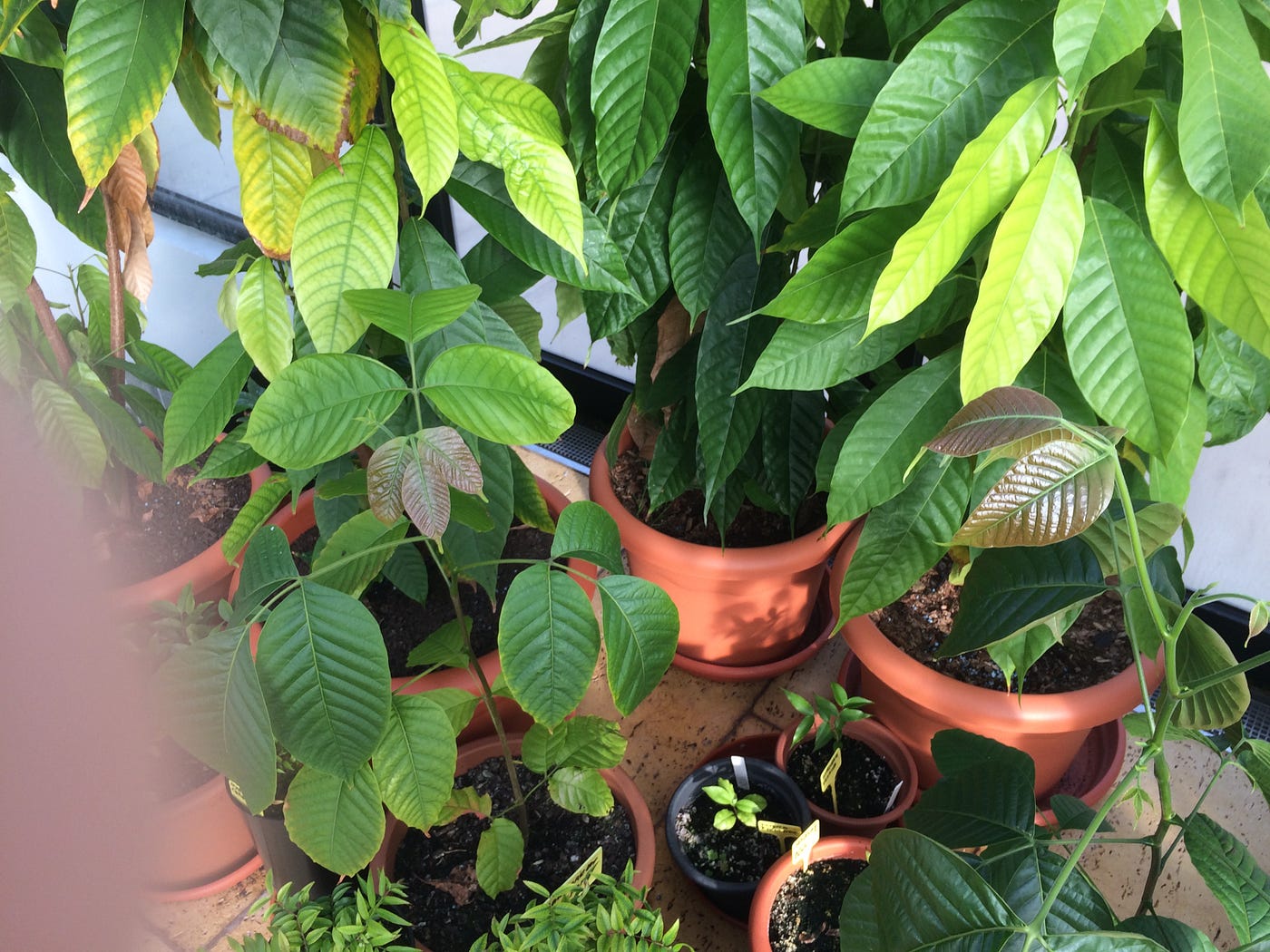
Credit: jan-jokela.medium.com
Frequently Asked Questions
How Fast Can You Grow Cocoa In A Greenhouse?
Cocoa grows faster in a controlled greenhouse environment. Optimal conditions can accelerate growth to harvestable pods in 3-4 years. Maintain consistent temperature, humidity, and light for best results. Regular pruning and fertilization help ensure healthy growth and maximize yield.
Is It Illegal To Grow A Cocoa Plant?
Growing cocoa plants is generally legal. Restrictions might apply if intended for illegal substance extraction. Check local regulations to ensure compliance. Cocoa is primarily grown for chocolate production and is not classified as an illegal crop. Verify rules in your region for growing conditions and plant usage.
Why Is It Hard To Grow Cocoa?
Cocoa growth is difficult due to its need for specific climate conditions. It thrives in warm, humid environments. Pests and diseases frequently attack cocoa plants. Farmers face challenges with soil fertility and water management. Limited access to quality seeds and proper agricultural practices also hinder cocoa cultivation.
What Can You Not Grow In A Greenhouse?
Certain plants, like large trees, cannot grow effectively in a greenhouse due to space limitations. Some crops requiring specific outdoor conditions, like certain fruit trees or large shrubs, may also struggle. Greenhouses typically support smaller plants and crops with controlled environments, excluding those needing expansive space and specific natural elements.
Conclusion
Growing cocoa in a greenhouse is possible. It requires dedication and patience. The environment must mimic tropical conditions. Warm temperatures and high humidity are key. Soil quality also matters for healthy cocoa plants. Regular care ensures plant health and fruit production.
Greenhouses can help control climate conditions. This makes cocoa cultivation feasible even in cooler areas. Success demands commitment and careful monitoring. With time, you can enjoy homegrown cocoa. A rewarding journey for any gardening enthusiast.



